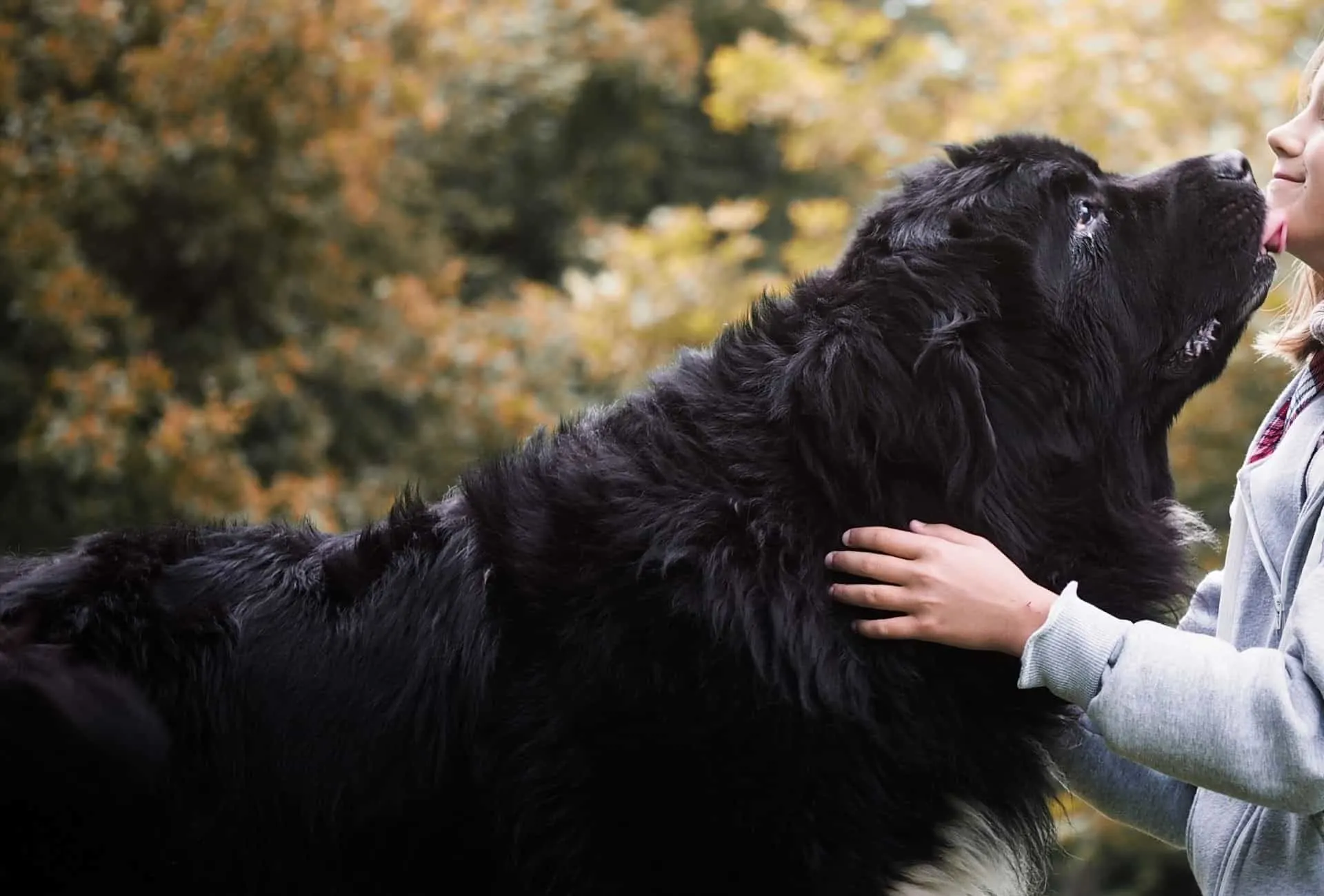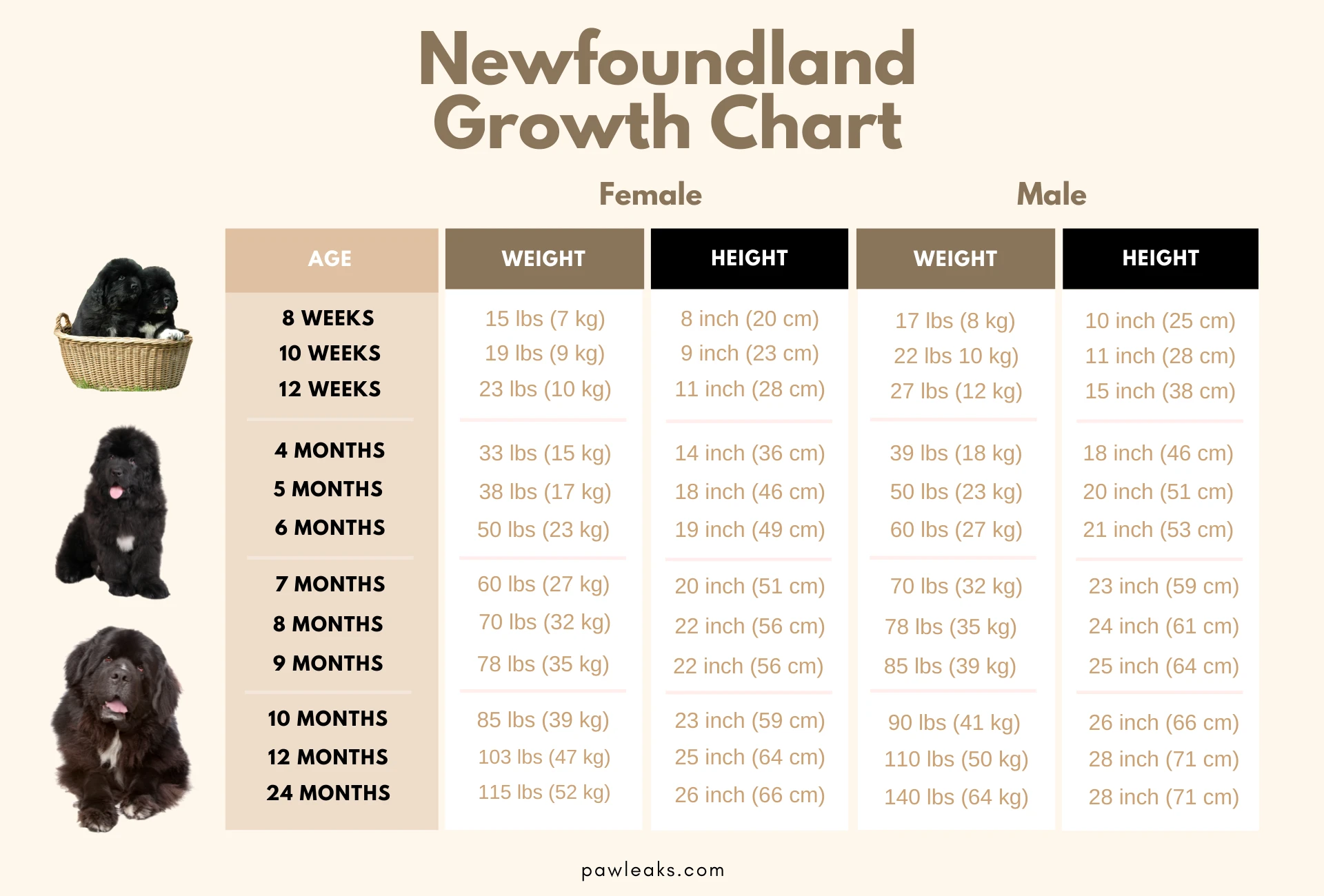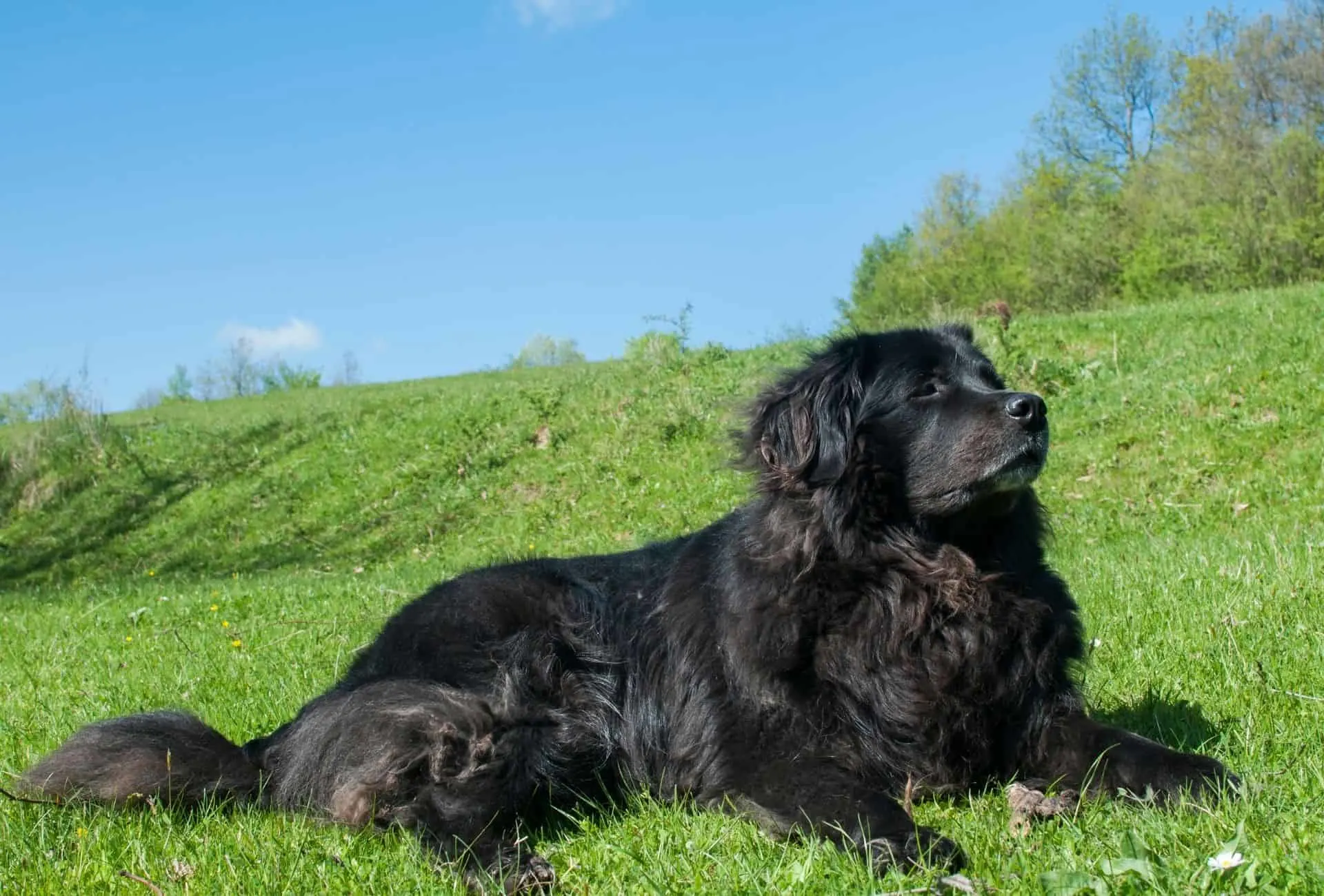Newfoundlands are among the largest dogs in the world.
They’re admired by many for their kind nature, imposing size, and fluffy coat.
A Newfoundland dog has a big and strong working body that has been in service to farmers and fishermen for generations.
Aside from being an attraction, the dog’s massive size can also be a deterrent for people unfamiliar with the breed.
If you are thinking of adding one of these mountains of fluff to your family, you will need to know the puppy’s growth rate and the factors influencing it.
Weight and height fluctuations can sometimes indicate that you might be doing something wrong or that your dog needs medical attention.
If you decide to buy a Newfoundland puppy you should get one from a reputable breeder.
This is the only way to be sure the puppy comes from a verified lineage of dogs.
If possible get to know your pup’s parents and get as much info on their background as possible.
It’s always possible to adopt a Newfoundland rescue dog that has been neglected, abused, or abandoned.
Many organizations work on preserving and advancing the breed so it might be worth it for you to get in touch with them.
Newfoundland Dog Size Comparison
Newfoundland dogs are classified as giant breed dogs. Adult Newfies are around the same size as a Great Pyrenees, Greater Swiss Mountain Dog, Leonberger, and Rottweiler.
Their massive build is even more noticeable when put next to other media to large dog breeds such as the Bernese Mountain Dog, German Shepherd, and Labrador.
Female Newfoundlands are around 30 pounds (14 kg) heavier and 2-3 inches (5-8 cm) taller than Bernese males.
Males can weigh 30-50 (14-23 kg) pounds more and be 3-5 inches (8-13 cm) taller than Bernese males.
I happen to house an amazing 100-pound Rottweiler girl and on average, Newfies are 3 inches (7cm) taller on the smaller end and 2 inches (5cm) taller on the high end with slightly more weight too.
Compared to the athletic Rhodesian Ridgeback, the Newfie weighs considerably more (the same applies compared to breeds like the Weimaraner and Dobermans).

However, a fully grown Newfoundlander is no match for the mighty Saint Bernard.
The extra-large Saint Bernard can be 20-30 (9-14 kg) pounds heavier and interestingly enough they have approximately the same height.
Both are large enough to knock things over unintentionally (children included).
When they raise themselves on the back legs they are almost as big as an adult human and even heavier in some cases.
That’s why it’s better to live in a spacious home because it’s all about space with these dogs.
Newfoundland Growth Chart
The Newfoundland Growth Chart gives the average weight and height for male and female puppies throughout their growth stages.
The last row is reserved for full-grown male and female Newfoundlands.

Make sure you weigh your puppy regularly.
Most of the time when a puppy is falling behind for a few weeks, it’s nothing serious you should worry about because they can get back on track very fast.
Significant deviations from the average height and weight for a period of 2 or more months can be considered a development problem.
If that’s the case, take your puppy to the vet to find out what might be causing the growth stagnation.
Keep in mind that the best-comparing models are your puppy’s siblings from the same litter or previous litters.
Keep in touch with their families and share information as they grow up.
How Big is An 8 Week Old Newfoundland?
An 8-week-old Newfoundland puppy should weigh around 15-20 pounds (7-9 kg) with males being heavier than females. Healthy Newfie puppies gain approximately 10 pounds (5 kg) each month.
By the time they are half a year of age, their weight is around 60 pounds (27 kg).
The growth rate slows down significantly after the sixth month.
It becomes harder and harder for the owners to weigh their dogs at this point.
Medium-sized dogs and even large ones can be managed, but a regular bathroom scale won’t do the trick with a Newfoundland.
For these dogs, you need something much sturdier and bigger.
Probably the best way of measuring your pup’s weight is by going to the vet clinic or a pet store.
It doesn’t have to be during a scheduled check-up since most veterinary establishments will let you use their scales for free.
Some groomers or other pet shops also have animal scales and you can even purchase one for home.
Underweight Newfoundland Puppy
Assuming that you continuously compared your puppy’s weight to the chart’s averages and you noticed that he is underweight for some time now, I’d suggest visiting your vet and having the dog checked out thoroughly.
Some puppies have a case of late-blooming that isn’t a health problem whatsoever.
Moreover, some late bloomers end up being bigger in adulthood than most of the dogs that were heavier than them while growing up.
It’s up to you to provide your puppy with a quality diet, medical care, and enough exercise all of which have a direct impact on his growth rate and well-being.
The only factors that can cause growth stagnation after you provided the necessary care are health problems or birth defects.

A Newfoundland puppy must eat quality and balanced dog food that provides enough nutrients.
When you give food that lacks the essential proteins and amino acids there is not much the body can use to get bigger.
Even large quantities of low-low quality food cannot contribute to proper growth.
If you want to avoid commercially sold puppy food, you can always start feeding a raw diet or prepare home-cooked meals.
This is a risky step and just to be sure you are doing the right thing have a conversation with your vet or with a person who specialized in dog nutrition on top of plenty of research.
Exercise is very important for a puppy and can positively affect his growth in many ways.
It will most certainly prevent the puppy from becoming obese and suffering obesity-related problems such as hip dysplasia or knee dysplasia.
Exercise makes the muscles larger and stronger.
If a puppy is underweight, it can mean that the lack of exercise left him with poorly developed muscles.
Remember to work on your puppy’s muscle tone with his fair share of daily dog sports.
Besides the dog’s weight, you should also consider his body structure.
A pup may have a bodyweight below the average, but if the body condition is ideal, it’s highly unlikely that there is something wrong with him.
A healthy body condition means that the dog is narrowing around the waist.
At the same time, the dog’s ribs shouldn’t be visible but must be felt under the palms of your hands.
Because of the breed’s fluffiness, you can visualize your Newfoundlands’ body contours better when you are bathing them.
How Long Does It Take For a Newfoundland To Be Fully Grown?
Bone growth stops around 18-24 months and beyond that, they can be considered fully grown. Any further increase in bodyweight is possible but should align with the height chart.
Interestingly, Newfoundland dogs reach their sharpest point for mating around this time as well.
That’s a lot of time considering the fact that most other breeds mature way earlier.
The average weight of full-grown Newfoundlanders is 130-150 lbs (59-68 kg) and the average height is 26 to 28 inches (66-71 cm).
Of course, the male dogs are somewhat larger than the females.
The females are expected to be close to the lower height range of 26 inches (66 cm) and weigh between 100 and 120 pounds (45-54 kg).
One of the main reasons why people decide on getting a Newfoundlander is their massive size – the bigger the better.
There are some cases when individual Newfoundlanders can weigh even more than 200 pounds (91 kg), but that’s really rare.
The record for the largest Newfoundlander is 260 (118 kg) pounds of body weight and 6 feet (183 cm) of body length (nose to tail).
However, the weight of your dog should never be the main goal; keeping an eye on their well-being instead is far more important.
Being overweight can pose dire health risks.
Weight For a 1-Year-Old Newfoundland?
The average weight for a 1-year-old male Newfoundland dog is 100-120 pounds (45-54 kg).
A 1-year-old female weighs between 100 and 105 pounds (45-48 kg).
The average height of females is around 25 inches (64 cm) and the average height of males is 28 inches (71 cm).
The numbers are pretty close to the full-grown weight and height of both males and females.
Don’t panic if your Newfoundland dog is already 1 year old but below the average.
If the dog acts and eats normally, he still has 12 more months to reach his full potential.
After the first year of age, most Newfies just bulk up and become wider in appearance.
What Dog is Bigger than a Newfoundland?
Three dog breeds rank higher than Newfoundland on the Largest-Dog scale. The English Mastiff, the Irish Wolfhound, and Saint Bernard are giant dog breeds taller and possibly bigger than the Newfie.
A full-grown English Mastiff can weigh 150-250 pounds (68-113 kg) and adult females come up to 120-200 pounds (54-91 kg).
The largest noted individuals can even reach 300 pounds (140 kg) of body weight.
Even if it’s not the largest of them all, a Newfoundland is still a huge responsibility and will consume most of your free time but also grant you unforgettable moments of happiness.
Bathing becomes more difficult, grooming that fluffy coat is a regular task, food is more expensive, vet visits might increase in costs, and so on.
Disclaimer: This blog post does not substitute veterinary attention and does not intend to do so. I am not a veterinarian or pet nutritionist. If your dog shows any sign of illness, call your vet.